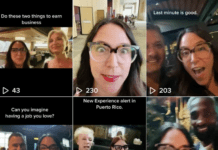
A Twitter hashtag is a word or phrase preceded by a pound sign (#) and used to identify messages on a specific topic. For big meetings with speakers and educational sessions—events where there is a lot of learning and buzz—creating a hashtag to start discussion, recap presentations and engage attendees makes sense. To build engagement, planners can even create a contest with a prize for the person who tweets the most.
For some events, however, this trend has been tried and put on the do-not-repeat list for the next year because the hassle is not worth the payoff. It just depends on your specific audience and mission.
Dan Yaman, president and CEO of LiveSpark, summarizes the pros and cons of meeting hashtags:
Pros
- We’ve seen some truly unique interactions come out of the Twitter hashtag. Participants can engage personally with a keynote speaker and get questions answered that wouldn’t normally come up at the event.
- Attendees can engage with each other in a less formal, peer-to-peer way.
- Twitter feeds at the event can give a real-time pulse of what’s going on, and can help solve attendee problems/answer questions at-moment.
- The hashtag feed gives you an opportunity to make the event encompass the entirety of the time together—not just the general session or breakouts.
Cons
- Adoption can be low with certain audiences. People either don’t have a Twitter account to engage, or don’t want to use their own personal account for a business event (and don’t want to create a new account for the sole purpose of the event, either).
- The few people who do end up participating in the Twitter feed tend to be heavy users (there isn’t a lot of moderate participation), and have their own cliquish event discussion apart from non-using peers. This also leads to nose-in-the-phone syndrome during event time.
- Generating enough use for the hashtag/feed is continual work. Presenters, materials and staff must constantly “market” the hashtag—or it doesn’t get used.









